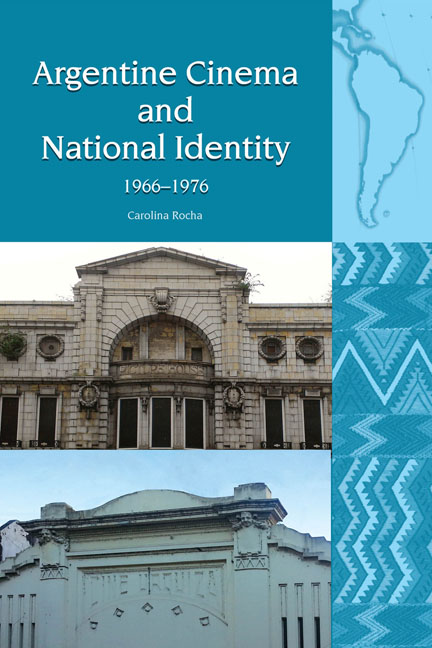Book contents
- Frontmatter
- In Memory of Paulina Piselli (1937–2017)
- Contents
- Acknowledgements
- Introduction
- Section I Argentine History and National Cinema, 1955–1976
- Section II The Cinematic Gauchesque
- 5 Martín Fierro
- 6 Don Segundo Sombra
- 7 Santos Vega
- 8 Juan Moreira
- 9 Los gauchos judíos
- Section III Representing Founding Fathers
- Conclusion
- Bibliography
- Index
5 - Martín Fierro
from Section II - The Cinematic Gauchesque
- Frontmatter
- In Memory of Paulina Piselli (1937–2017)
- Contents
- Acknowledgements
- Introduction
- Section I Argentine History and National Cinema, 1955–1976
- Section II The Cinematic Gauchesque
- 5 Martín Fierro
- 6 Don Segundo Sombra
- 7 Santos Vega
- 8 Juan Moreira
- 9 Los gauchos judíos
- Section III Representing Founding Fathers
- Conclusion
- Bibliography
- Index
Summary
The project of adapting Martín Fierro for the silver screen was spearheaded by Torre Nilsson, a seasoned filmmaker eager to leave his imprint on Argentine cinema. Despite César Maranghello's assertion that Torre Nilsson decided to shoot historical topics preferred by the Institute (2005a, 181), his Martín Fierro was the product of a long process influenced by certain developments in Argentine society. In 1959, the Martín Fierro Awards for the best radio and TV programs were established. Around that time, Torre Nilsson started thinking about adapting Martín Fierro to the screen:
Planeé por primera vez filmar Martín Fierro a fines de 1959. Diversas circunstancias determinaron que la cosa quedara en proyecto. Dificultades de adaptación. Falta de adecuada financiación. Martín Fierro no podía hacerse como un filme más, con dos meses de preparación, dos de filmación y uno de montaje.
[I first planned to shoot Martín Fierro at the end of 1959. Various circumstances determined that the project be cancelled. Difficulties in adaptation. Lack of adequate financing. It was no longer possible to make Martín Fierro as a film, which would need two months of preparation, two months of filming, and one month of editing] (Couselo, 1985, 177)
An additional problem that emerged was the issue of fidelity to the original poem. In a 1965 interview, Torre Nilson confessed: ‘El principal inconveniente es tener que ceñirme bastante a la obra original […] Mi intención era ubicar a Martín Fierro en el año 1930’ [The main obstacle was having to closely adhere to the original work (…) My intention was to place Martín Fierro in the year 1930] (Sanmaritano and Mahieu, 1965, 10). A year later, and after two co-productions, Torre Nilsson was even more convinced of the need to depict Argentine themes; preparations to adapt the poem began. Scriptwriters Beatriz Guido, Edmundo Eichelbaum, Héctor Grossi, Ulises Petit de Murat, and Luis Pico Estrada worked for six months on the poem's adaptation. In July 1967, Alfredo Alcón signed the contract to play the Argentine gaucho. Coincidentally, two months later, young director David Stivel (1930–1992) directed a version of Martín Fierro with Federico Luppi as the lead for the TV channel 11.
- Type
- Chapter
- Information
- Argentine Cinema and National Identity (1966–1976) , pp. 83 - 94Publisher: Liverpool University PressPrint publication year: 2018

